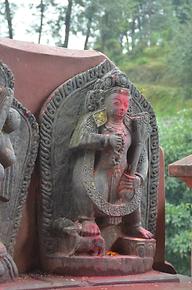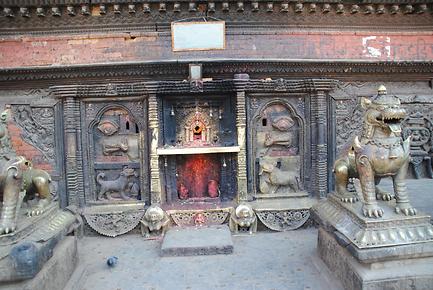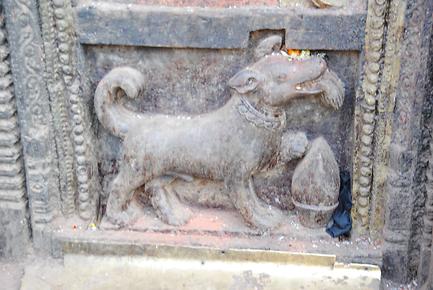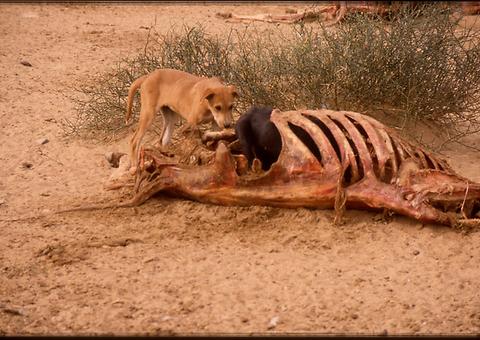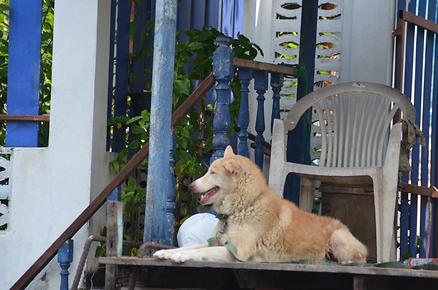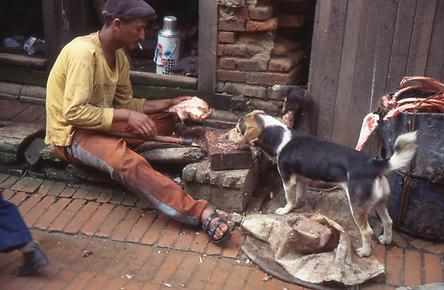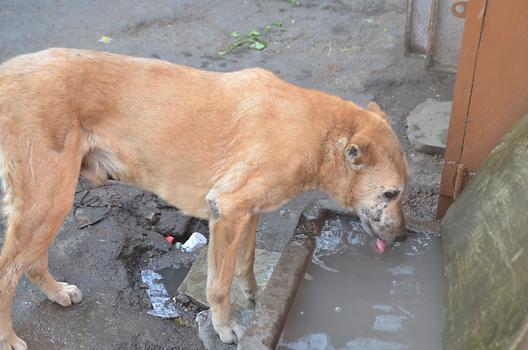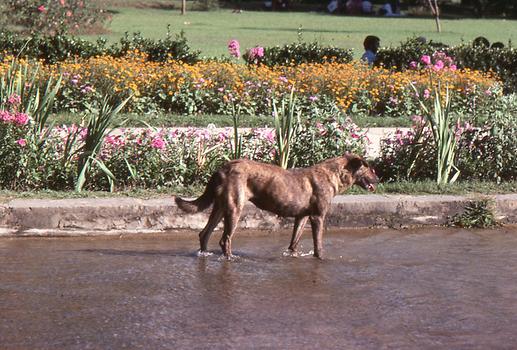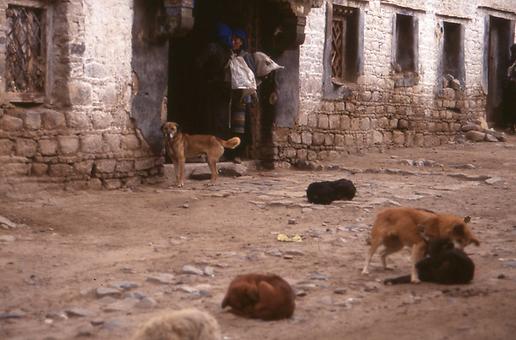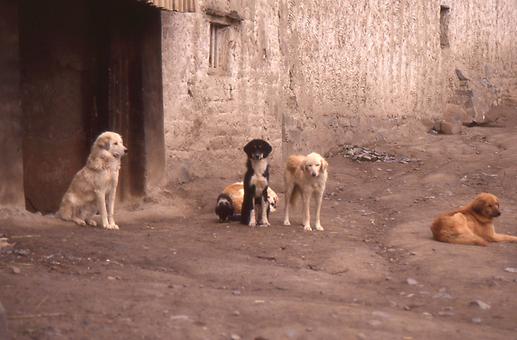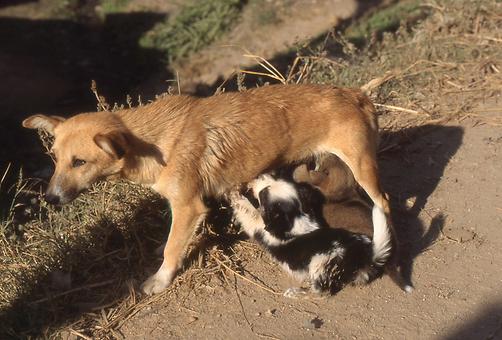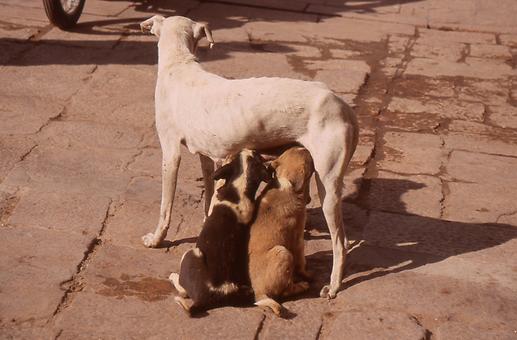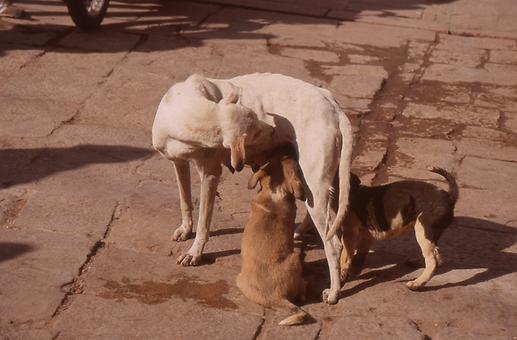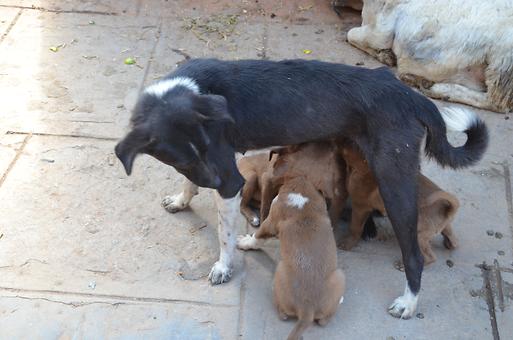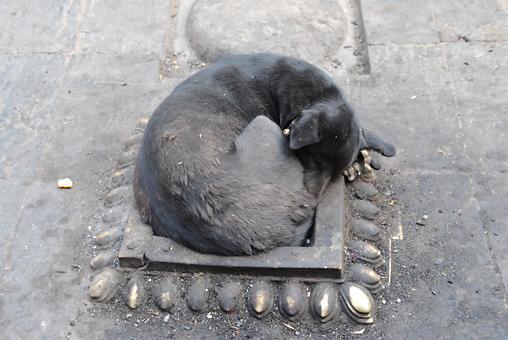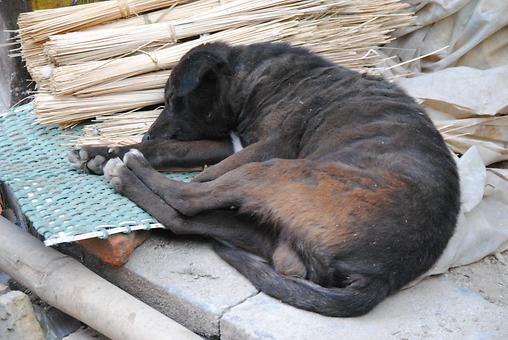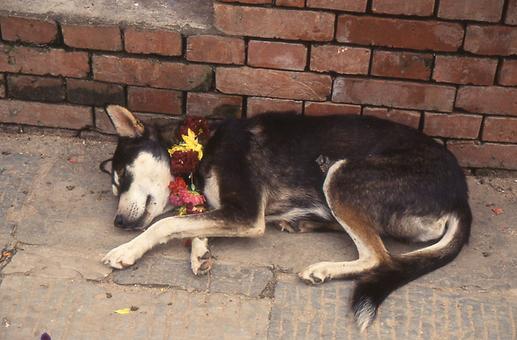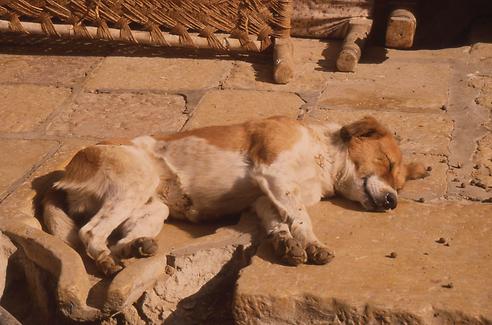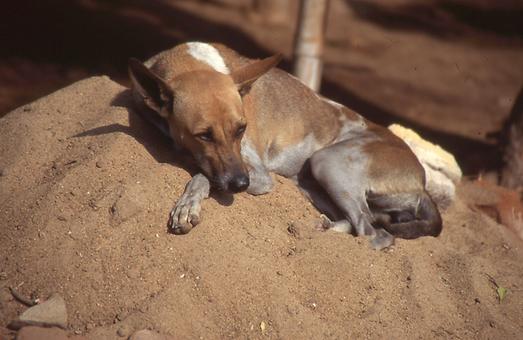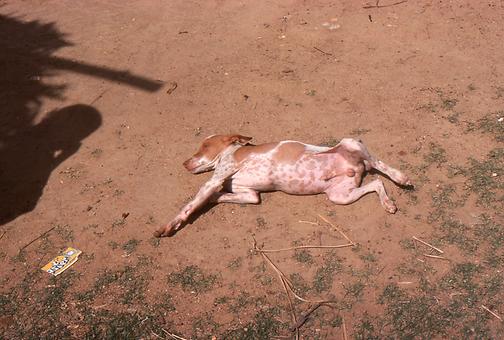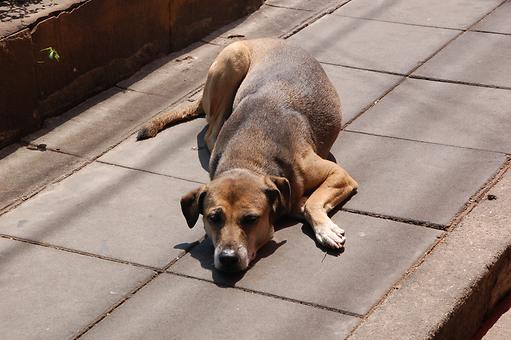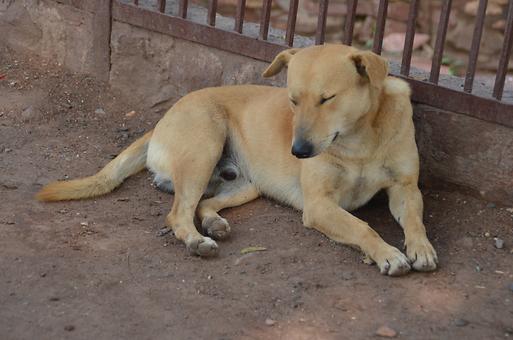Dogs in India #
Pitiful, cute, but also sometimes dangerous#
The photos were taken by the author from 1974 up to the present day. They are part of the archive “Picture flood Jontes” and under (c) Jontes.
Indians are animal-loving people. Animals are part of their religious myths, of feasts and also of their daily life. Who does not know the sacred cow of the Hindus. In Hindu South Asia, all deity have their own riding animal and many of them have a body that contains part of an animal. The fire god Agni has a dog (skr. vahana) as riding animal and as companion. Agni belongs to gods who already appear in the Vedas and embody one of the elements. For this reason his stautur is in the Nepalese temple district Gokarna.
One of the frightening appearances of the High God Shiva is Bhairava who is accompanied by dogs as can be seen at the Bhairava Temple of Bhaktapur in the valley of Kathmandu. They frolic around their master with limbs of defeated demons in their catch.
Dogs are always visible and audible contemporaries and belong to the everyday life in streets.
There are roughly 50 million dogs in India. Dogs are running around in settlements in human proximity and fight for their lives with their own strategies. In addition, there are some 10 million more dogs that are almost members of families. They are pampered and cared for in urban and rural households.
Actually, dogs are hunter-gatherers, seeking after animal protein. Like vultures, they also act as health police by removing fallen animals or carrion. In the last decades, almost all vultures which were previously always present died of a mysterious virus disease. Therefore, the importance of dogs outside the settlements has been increasing. In life with and around people, they have already changed their type of food supply in such a way that they do not reject plant food any more.
The dog had already become a friend of man, when man as hunters and collectors, acting in small groups, followed their animal and vegetable food and took wolf pups which were left alone by their mother animal. In the course of time, they won a valuable hunting partner.
Except of wolves, there are also African and Asian wild dogs. They are horde-forming hunters. In close community, they find their prey, encircle it and finally kill it.
The semi-savage Indian street dogs owe part of their livelihood to the general animal love of the Indians that is religiously founded. In many cases, dogs are fed and thus provide donators a good karma in Hindu life concept.
In the highest social circles, European lap dogs are being pampered excessively. At the court of the Maharajas of Jodhpur the dogs have their own staff. In households of urban milieu, puppies are already trained and prepared for certain purposes. Afterall, it could be that at some stage a Nepali trader in Bhaktapur wants a dog as a guard.
In Tibet, you can notice that there are many dogs in monasteries which seem well nourished and contented. In the karmic circle of rebirth which is based on the life-balance it is easily possible that you are reborn in animal form when sins were outweighing. It is said that the monks especially care for the dogs because the monks could have the same fate as the dogs.
Today, dogs in Indian streets are medium-sized, colour-differentiated, light-footed animals which appear to be harmless and good-natured. But dogs can be bearers of annoying and also dangerous parasites, especially rabies that has even in Europe has noit been fully iredicated yet. Tetanus vaccination protects against rabies. It should be refreshed when you are going on a trip to India.
The basic rule in dealing with Indian dogs is: Keep away from them, go away when they are approaching you and don’t touch them.
Muslims hate dogs, they consider them as unclean. They chase dogs where they appear and stay away from them. Arabic dirty words contain very often the linguistic element kelb, meaning dog.
The love life of stray dogs is not hindered by man and they reproduce themselves on every occasion. Dog mothers that suckle their puppies are frequently observed. Dog mothers are very often very thin and allow one or several puppies to suckle at the source of milk. Very often they are pitiful weak appearances which nevertheless take care of their puppies by insitinct.
A strange pecularity are different-looking puppies in one litter. Were there several fathers at work?
The impression arises that Indian stray dogs are nocturnal. Where they sit down, they sleep until their nighty “work of the day” begins. Sometimes they break into a common howl and barking that is almost unbearable. It is of course a means of communication within a herd or maybe the beginning of a fight about territory.
Perhaps the proverb “Let sleeping dogs lie” has its origin in India. Don't bother them and everything has to get out of their way.
